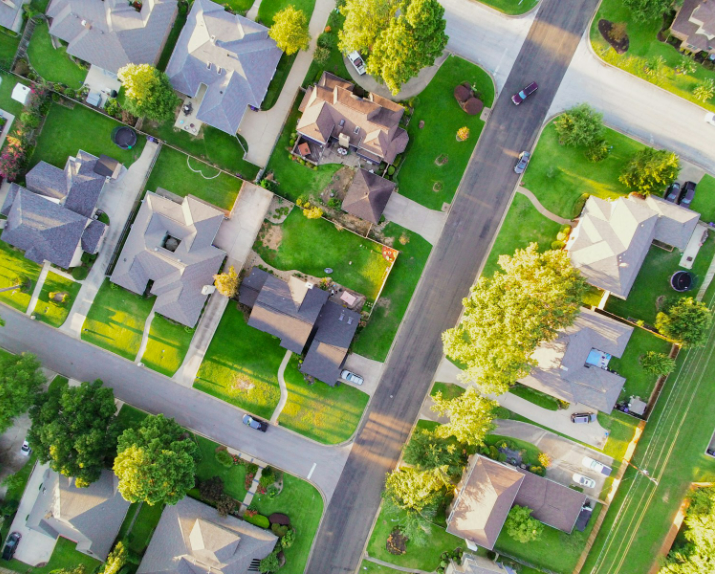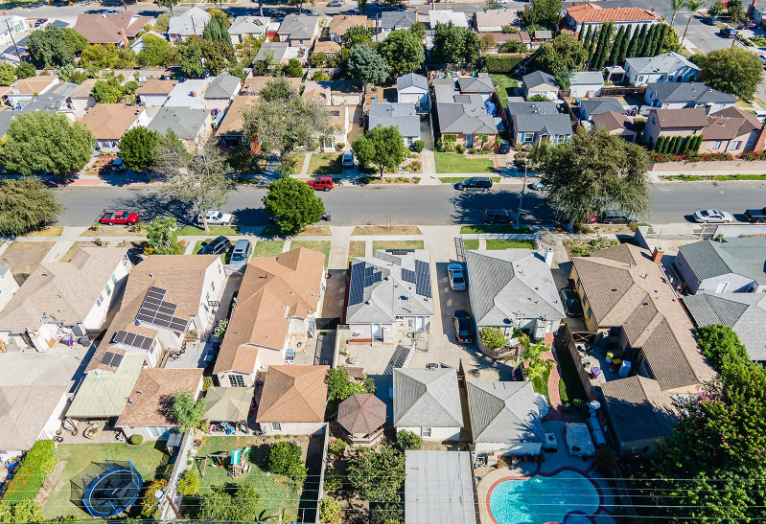How to Choose a Neighborhood for Your Next Home

Deciding to move and buying a house can be both stressful and exciting. One of the most significant decisions you’ll make at the start of your home search is choosing where to live. Once you’ve decided on the general location, it’s time to pick your new neighborhood. This decision can be challenging, especially if you have a family. It’s crucial to choose a neighborhood that is safe, practical, and offers something for everyone.
Neighborhood Safety
When choosing your next neighborhood, the most important consideration is the overall safety of the area. We understand the significance of safety, which is why we have created the “Scores” section on every listing details page for homes for sale or rent.
In the “Scores” section, you can find the Walk Score, Sound Score, Transit Score, and Bike Score.
How Walkable Is the Neighborhood?
To locate the “Scores” section, go to any property listing details page and scroll past the “Transit” section. There, you will find the Walk Score, which indicates the walkability of the address and provides a score out of 100. According to Walkscore.com, scores are categorized as follows:
- 0-20 and 25-49: Car-Dependent
- 50-69: Somewhat Walkable
- 70-89: Very Walkable
- 90-100: Walker’s Paradise
A Walk Score below 59 might seem low, but a score between 25-49 indicates that your family may still be able to walk around the neighborhood, though running errands on foot may be challenging. If you prefer a more pedestrian-friendly area, look for a home with a Walk Score above 50.
How Loud Is It?
To understand the noise level of your potential neighborhood, check the Sound Score. Located just below the Walk Score, the Sound Score measures outside noise levels on a scale from 0 to 100, where 0 is very loud and 100 is very quiet. Since getting a good night’s rest is crucial, if noise is a concern, aim for a home with a Sound Score between 70 and 100.
Is There Transit Nearby?
To check on nearby transit for you and your family, look at the Transit Score on the listing details page. You will find the Transit Score to the right of the Walk and Sound Scores. The Transit Score indicates the proximity of public transit options, rated on a scale from 0 to 100. According to Walkscore.com:
- 0-24: Minimal Transit
- 25-49: Some Transit
- 50-69: Good Transit
- 70-89: Excellent Transit
- 90-100: Rider’s Paradise
Using public transit is not only environmentally friendly but also more affordable than daily car use. If you want to ensure your new neighborhood offers ample public transportation options, look for a home with a Transit Score above 50.
Is It Safe to Ride a Bike?
To determine how safe it is to ride bikes in the neighborhood, check out the Bike Score, which is the final part of the “Scores” section, located below the Transit Score. According to Walkscore.com, the scale is:
- 0-49: Somewhat Bikeable
- 50-69: Bikeable
- 70-89: Very Bikeable
- 90-100: Biker’s Paradise
If your family enjoys biking together, look for a home with a Bike Score of at least 50 to ensure your rides are as safe and enjoyable as possible.
Streetlights

Look around to see how many streetlights are near your potential new home. Streetlights can make you and your family feel safer at night. If you notice streetlights on your street that don’t illuminate at night, you might need to pay a small monthly fee to your power company to keep them on. This is sometimes required in areas outside city limits.
Crime Rates
To get a clear picture of the safety in your new neighborhood, check the local crime rates. Websites like City Protect allow you to view incidents reported near your neighborhood and find the nearest law enforcement agencies. You can also sign up for incident updates to stay informed and protect your family.
Commute to Work
Consider your daily commute to work when choosing a neighborhood. A neighborhood you love may have a commute that’s over an hour long, which could be even longer with traffic. Use Google Maps to check the travel time between the home and your workplace. If the commute is too lengthy, you might want to consider a neighborhood closer to work.
Schools
If you have kids, check out the schools in the neighborhood you’re considering. This section lists up to four schools, providing their score out of 10, the type of school (elementary, middle, or high), and whether it’s public, private, or charter. It also shows the distance from the address. These scores are sourced from GreatSchools.org, where you can find detailed rankings and test scores for schools by address or name. This information helps ensure you’re sending your children to the best schools available.
Amenities Nearby
Consider the amenities that are important to you and your family, such as parks, pools, gyms, or restaurants. To find out more about the amenities in your new neighborhood, scroll down to the “Parks and Recreation” or “Property Details” sections on the listing details page. Having these amenities nearby can enhance your quality of life and help you make new friends in the neighborhood.
Engagement
When considering a new neighborhood, think about the level of community engagement. Some neighborhoods host group events, like block parties during holidays, which can be great for making new friends. If you and your family enjoy these activities, look for a neighborhood with a strong sense of community. Such neighborhoods often have a Homeowners Association (HOA). An HOA charges monthly fees to residents to maintain the neighborhood and promote community activities.
By considering these factors, you can choose the safest and most comfortable neighborhood for you and your family.